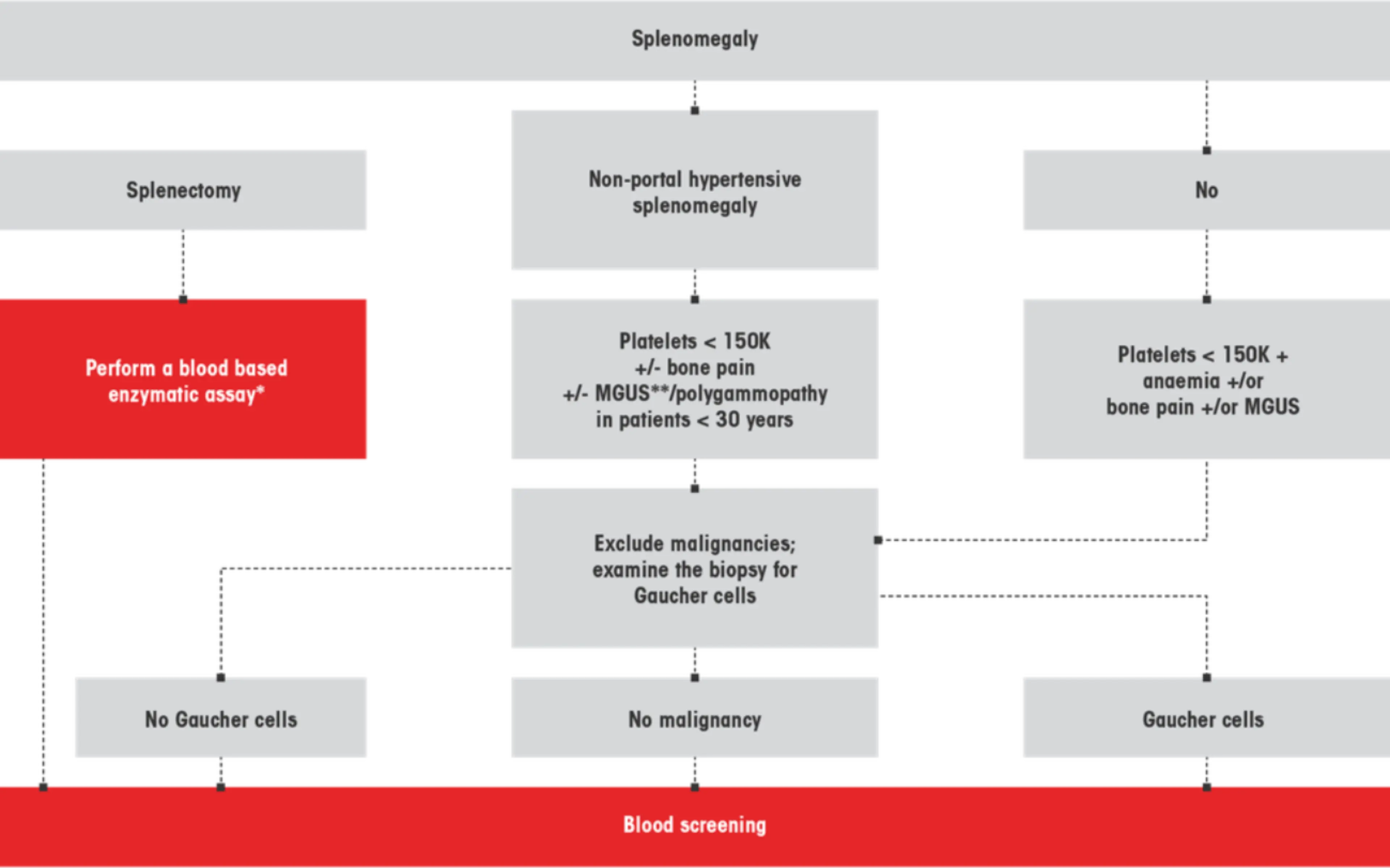- Article
- Source: Campus Sanofi
- 23 Oct 2023
Diagnosis of Gaucher disease

Early diagnosis is key
The early diagnosis and treatment of Gaucher disease are essential to prevent or reverse severe disease complications.1,2 However, when Gaucher is missed, a patient can remain untreated for up to 10 years.2
If left untreated, Gaucher disease can lead to:1,2
- Premature death from bleeding complications
- Pulmonary hypertension
- Liver disease
- Sepsis
- Growth failure
- Complications arising from advanced bone disease
- Impact on quality of life
Haematologists play a pivotal role in diagnosis. In a survey of 136 Gaucher patients in the US, Australia and New Zealand:2
- 86% were seen by a haematologist-oncologist in pursuit of a diagnosis in the US
In Australia and New Zealand, 73% of patients were seen by a haematologist-oncologist to obtain a diagnosis. However, a survey of over 400 haematology-oncologists in the US, Australia and New Zealand revealed that:2
- 80% do not consider Gaucher disease in their differential diagnosis.


Splenomegaly and thrombocytopenia are common symptoms of Gaucher disease.3
A recent Italian study found that in patients presenting with either of these symptoms, in addition to one other specified ancillary sign of Gaucher disease, the prevalence rate of Gaucher Type 1 was found to be 3.6%.4
Simple and effective diagnostic algorithms, such as the Cappellini protocol, make it easier to identify patients with suspected Gaucher disease.1
Diagnostic algorithm for Gaucher disease type 1 in individuals of non-ashkenazi Jewish origin

Figure adapted from Mistry, P. K., et al. 2011. Am J Hematol 86(1): 110–115.1
* Acid-β-glucosidase enzyme activity assay
** Monoclonal gammopathy of undetermined significance
References
- Mistry PK, et al. Am J Hematol 2011. 86(1):110–115.
- Mistry PK, et al. Am J Hematol 2007. 82:697–701.
- Gaucher registry annual report. Genzyme Corp. 2006.
- Motta I, et al. Eur J of Haematol 2015. 96:352–359.
MAT-XU-2201104 (v2.0) Date of preparation: October 2023